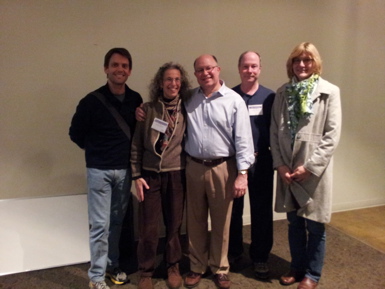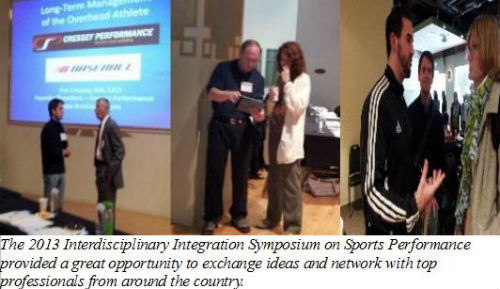Why does an athlete have an injury? Why can’t an athlete move to the left as easy as they do to the right? Why can’t an athlete get low to a ball?
This year’s PRI Interdisciplinary Integration Symposium provided answers for these questions and gave the clinicians at APT more insight into helping area athletes on and off the field. Many great speakers presented over the two days. Each of them are top tier professionals in their areas. The line up included: (follow the hyperlink to learn more about each speaker)
• Key note speaker: Mike Arthur, CSCS is the director of Strength and Conditioning for the University of Nebraska,
• Ken Crenshaw: the head Athletic Trainer for the Major League Baseball team, Arizona Diamondbacks,
• Dr. Heidi Wise, OD, FCOVD: a neuro-optometrist and co-founder of PRI Vision,
• John Cook: head coach for the University of Nebraska’s women’s volleyball team,
• Kris Berg EdD: studies exercise induced asthma and physiologic responses to exercise,
• Eric Cressey, MA, CSCS: works with high performance athletes including MLB players,
• Andrew Marchesi MPT, FAFS: Nike Golf Performance Specialist, NG360.
• And of course Ron Hruska: founder of the Postural Restoration Institute.
The common thread to all of these speakers was how each uses Postural Restoration to understand, improve and maintain Athletic Performance. Because athletics can promote imbalances in muscle development and body movement, Postural Restoration helps athletes re-establish reciprocal mobility through the thorax, spine and pelvis; A baseball pitcher who pitches 100 balls per night will demonstrate these performance induced imbalances. Imbalances will show up as under performance on the field or court as difficulty moving to one side more than the other, being unable to get low to a ball or as an injury. Additionally an athlete may have visual influences that are contributing to under performance during the sport. How well an athlete can see in the central and peripheral visual fields, their perception of distance and depth and the speed at which they can process visual information all affect their performance.
An athlete that works with a Postural Restoration minded physical therapist, strength conditioning coach, personal trainer or athletic trainer can be sure that they are getting the best in assessing and treating these patterns which can adversely affect performance or contribute to injury.





